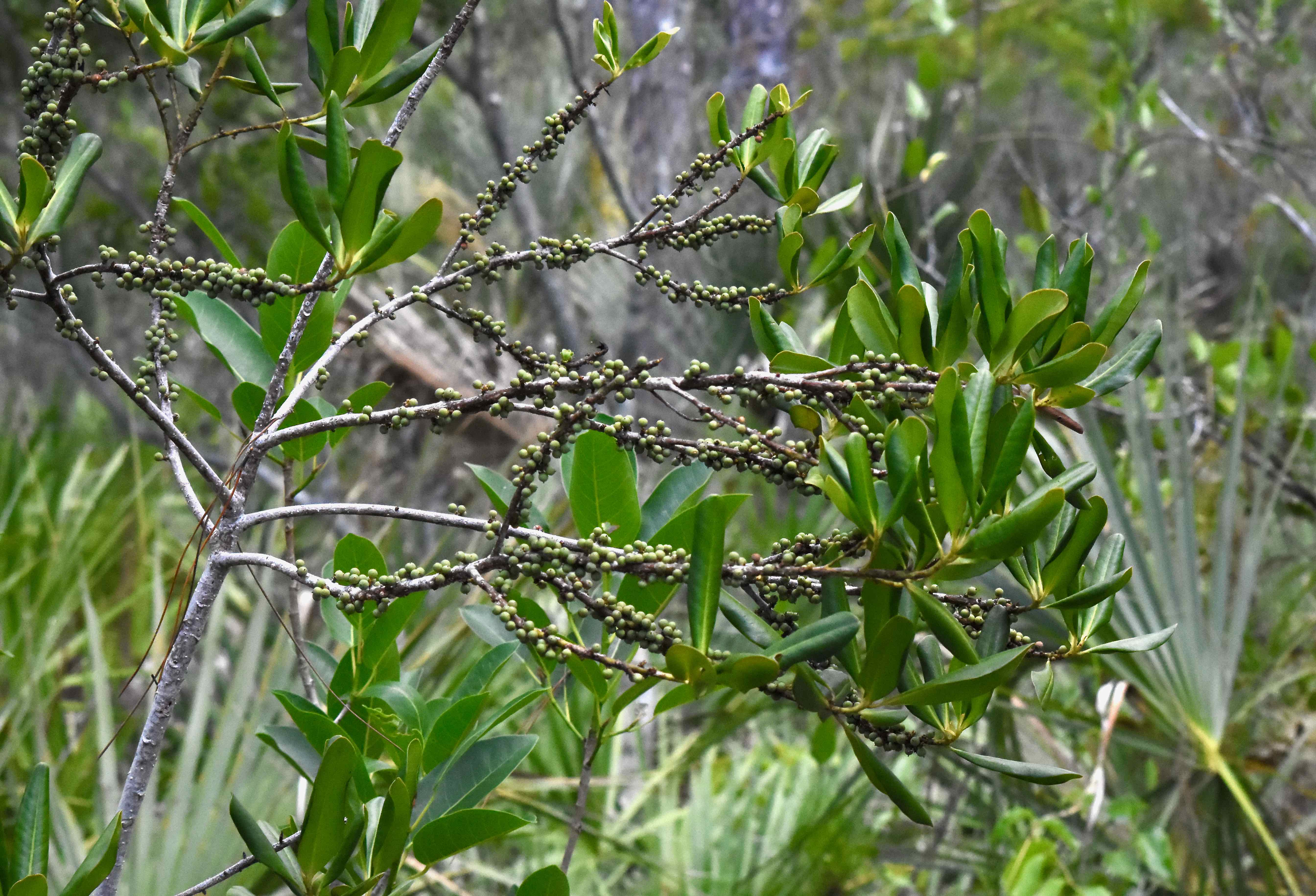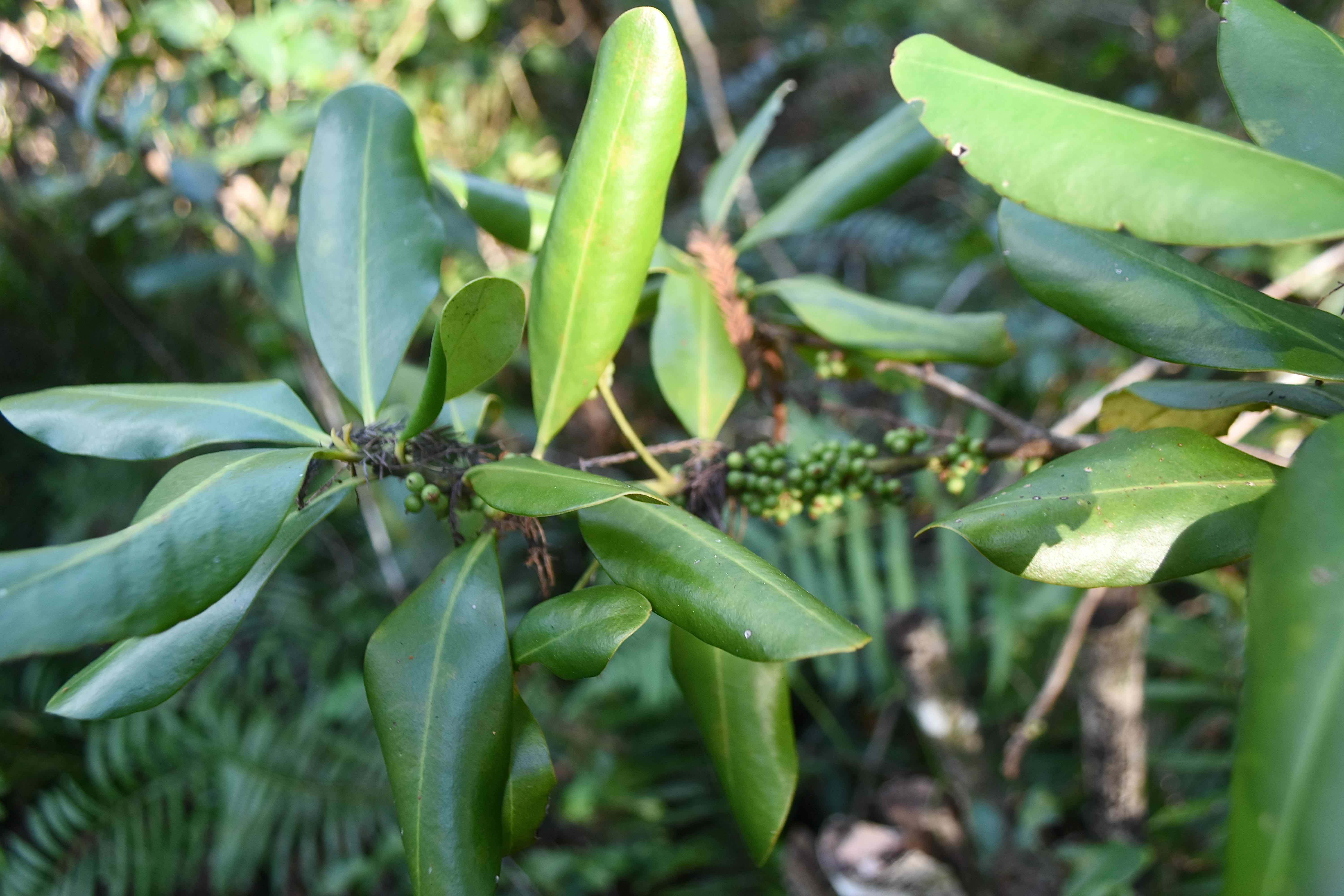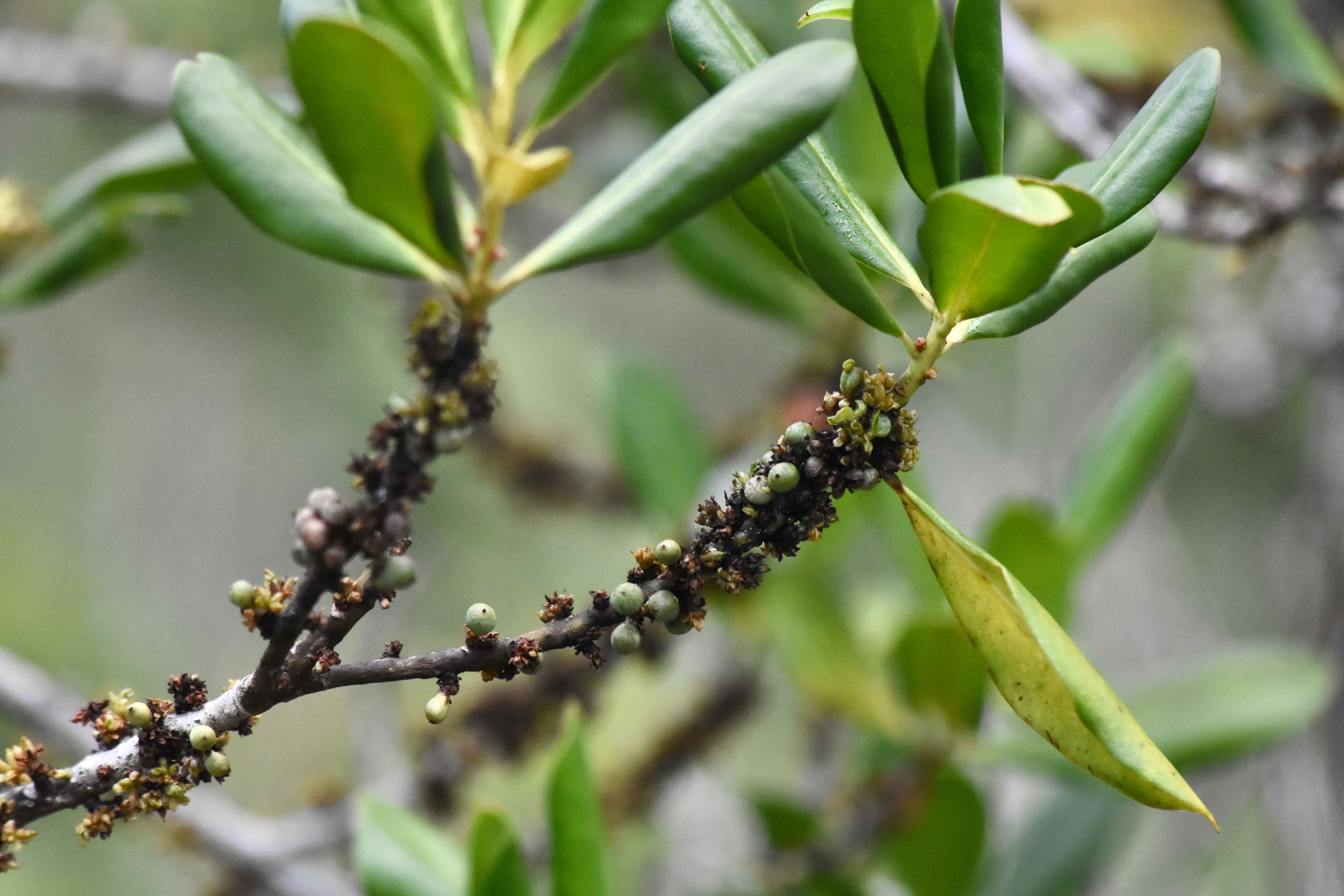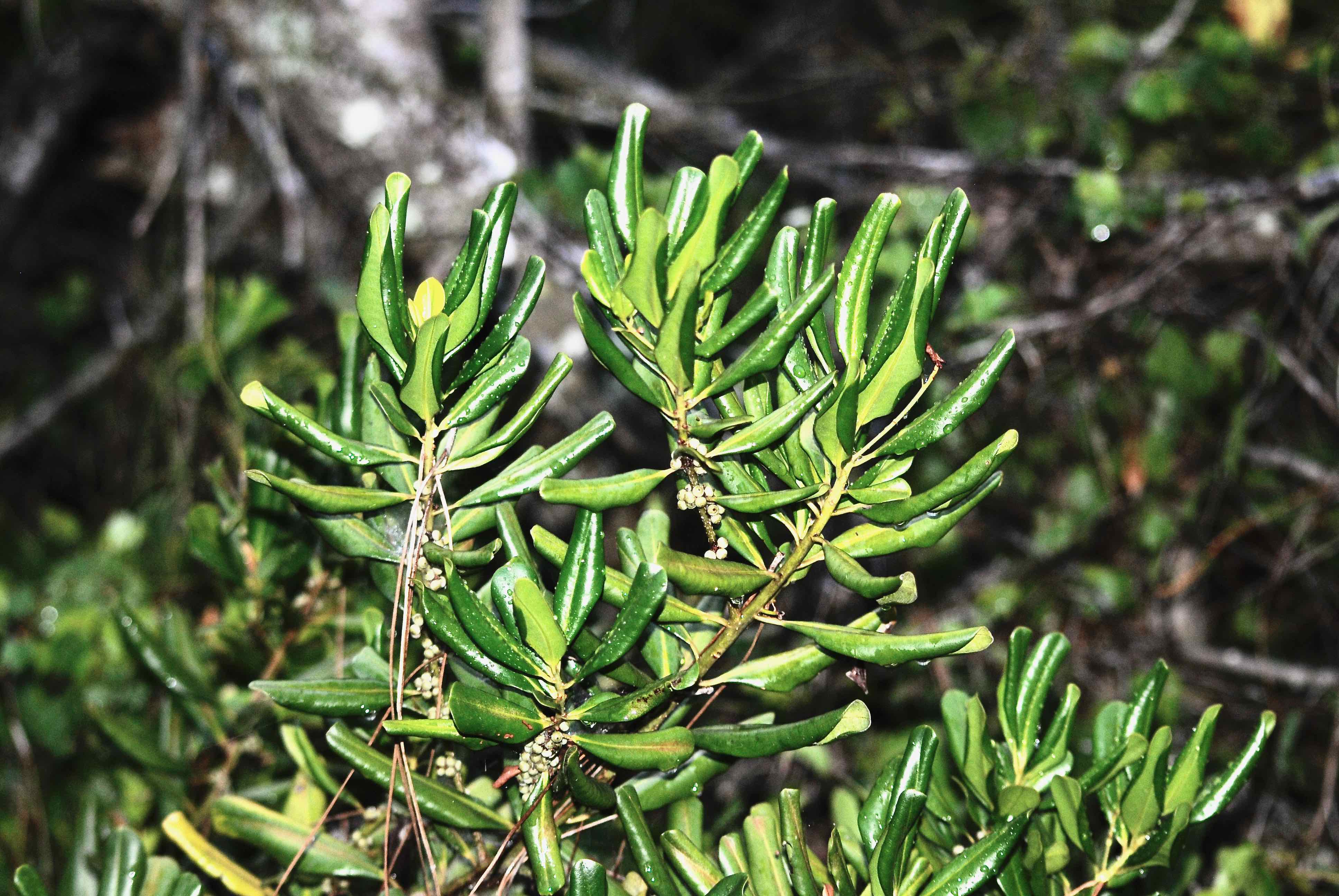
Myrsine, photographed at Everglades National Park, Homestead, Miami-Dade County, in May 2016.
Myrsine really is an unusual looking plant, and that's part of the charm that makes it a popular landscaping plant. Scientifically named Myrsine cubana, it has clusters of small berries that run the length of its branches, and leaves that cluster in whorls at the ends, giving it a twisted appearance.
Myrsine is a native of Florida — found only in Florida among the 50 states — and a quite common one. It's found in most of the Peninsula and a county or two in the Panhandle. It's also native of the Bahamas, the Caribbean, including Puerto Rico, and Central America.
It grows as a shrub or small tree and can reach 20 to 30 feet tall, but usually much less. It has mulitple stems or trunks and grows upright rather than in a sprawling habit. The leaves are elliptical in shape, about two to four inches long. They're unusual in that they grow at the end of branches rather than along their length. They also are alternate — staggered, rather than growing across, or opposite, from each other, creating a whorled look.
Myrsine flowers appear all year but fall and winter are the peak seasons. The flowers themselves are small, greenish white and grow in clusters along the branches — all in all, they're not much to look at. But they produce a small green berry — technically called a drupe — that turns black when ripe. The berries, ok drupes, grow in large numbers right along the branches, adding to the plant's unusual looks. By the way, there are separate male and female plants, and they must be in close proximity of each other in order to pollinate and produce fruit. The fruit seems to have little appeal for us human types, other than its looks, but reportedly some birds eat them.
Myrsine likes moist places with full sun or a little shade. Pinelands and hammocks are favorite habitats. The plant in the featured photograph on this page was found in the pine rocklands of Everglades National Park. Other photos were taken in the Fakahatchee Strand and Pondhawk Natural Area in Boca Raton. Once established, myrsine will tolerate seasonal dry spells. It is not salt tolerant, however.
Myrsine's habit and good looks makes it popular for use as a hedge or border. It's also recommended as an accent planting. It's widely grown by commercial nurseries throughout South Florida. The only ethnobotanical use for myrsine we could find was this: according to the Institute for Regional Conservation, the Miccosukee mixed dried leaves with smoking tobacco. We did see some references to medical uses but others say there is none for myrsine.
One of myrsine's other common names is colicwood, the reason for which remains a mystery to us, other than its frequently used as a common name for myrsine species. Others: Guianese colicwood and Florida myrsine. Previously myrsines were a taxonomic family unto themselves, but now are considered members of Primulaceae, which includes primroses. If you check the links below, most use Myrsinaceae as the family name. Institute for Regional Conservation uses Primulaceae.
Another quick taxonomic note: you'll see references to other scientific names for myrsine, including Myrsine floridana, M. guianensis, Rapanea guianensis and R. punctata, but the currently accepted name appears to be M. cubana.
Click on photo for larger image
Links for Myrsine



